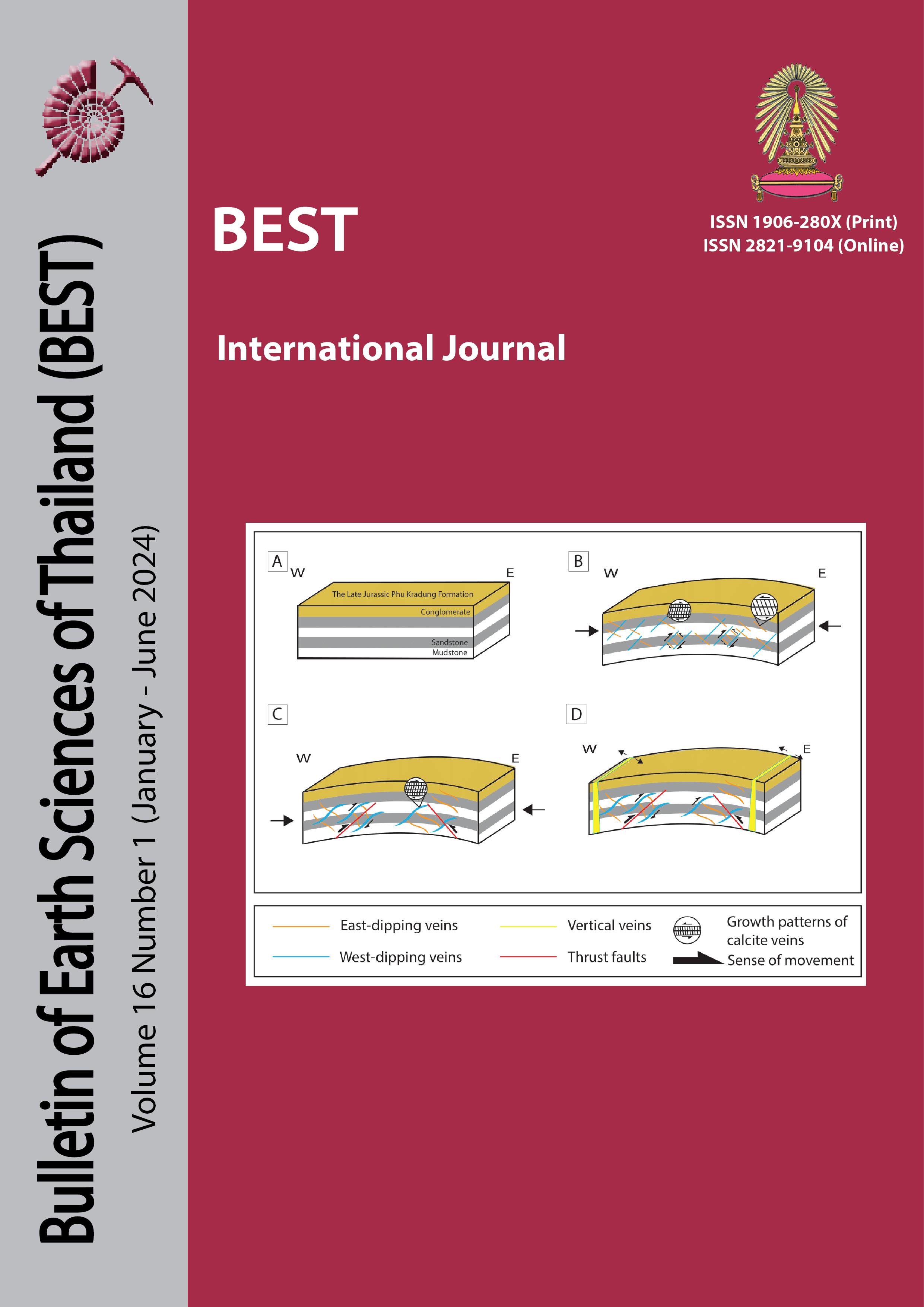Kinematic history of the thrust fault-related calcite veins at the Indochina margin, Thailand
Main Article Content
Abstract
The study area is in Lam Sonthi district, Lop Buri province, which is part of the Indochina margin. Calcite veins in the area are usually associated with thrust faults in the Mesozoic Phu Kradung formation at the western margin of Indochina in Thailand. Veins are crucial structures for unraveling the geological history of the host rock. The shape, orientation, and internal structures of veins reveal information about palaeo-stress fields, deformation kinematics, and fluid pressure. Therefore, in this study, structural and microstructural analyses of the calcite veins were conducted to examine the kinematics of the veins and their related geological structures within the Phu Kradung Formation in the Lam Sonthi area. The result suggests that the Phu Kradung Formation underwent gentle folding concurrently with the development of east- and west-dipping calcite veins. The fibrous nature of the calcite within these veins suggests shear components influenced by an east-west compression regime. The west-dipping veins often branched out into the east-dipping veins. Subsequently, thrust faults developed parallel to the earlier east- and west-dipping calcite veins. Later, vertical calcite veins intersected the pre-existing structures. These deformations were tectonically influenced by Eocene-Oligocene escape tectonics in Southeast Asia.
Article Details

This work is licensed under a Creative Commons Attribution-NonCommercial-NoDerivatives 4.0 International License.
Copyright © 2008 Department of Geology, Faculty of Science, Chulalongkorn University. Parts of an article can be photocopied or reproduced without prior written permission from the author(s), but due acknowledgments should be stated or cited accordingly.


